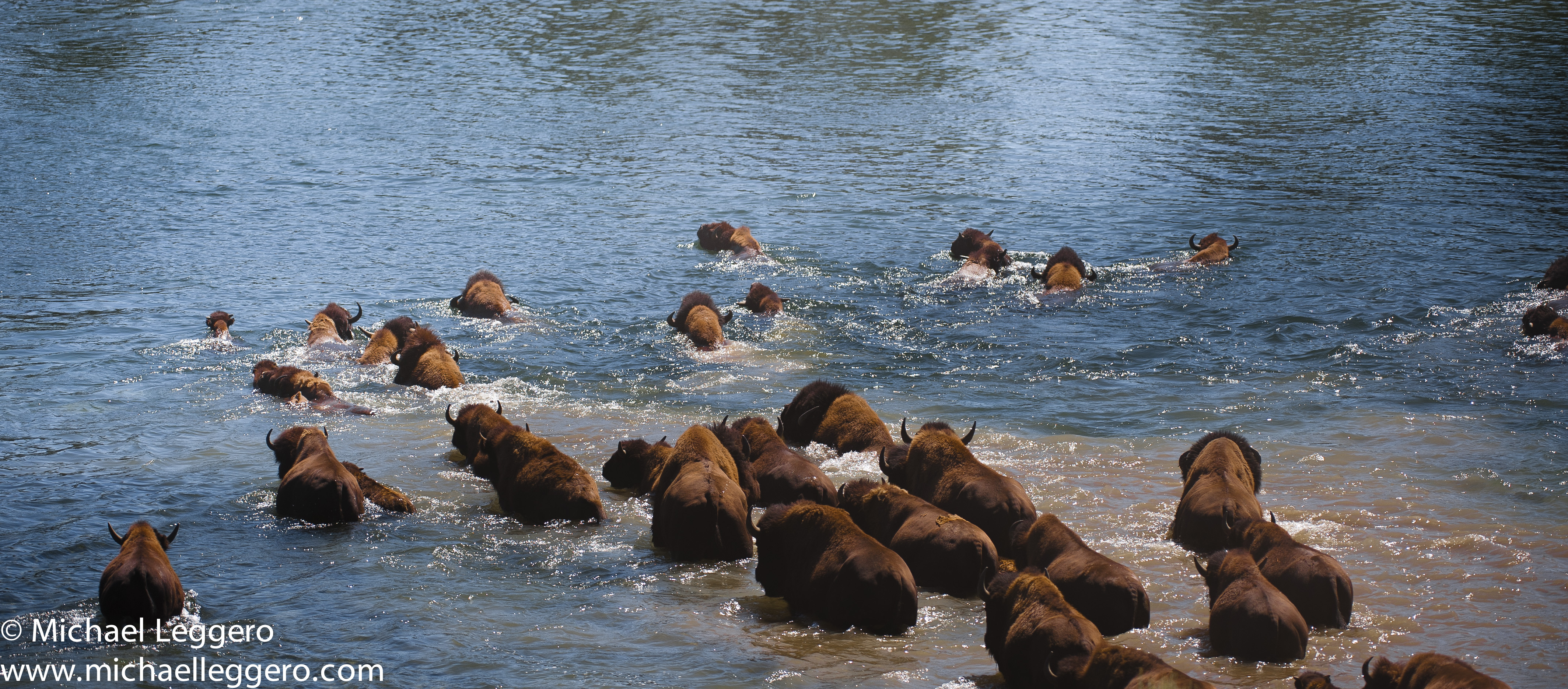
The American bison (Bison bison) is a North American species of bison, also commonly known as the American buffalo. Some consider the term “buffalo” somewhat of a misnomer for this animal, as it is only distantly related to either of the two “true buffalo,” the Asian water buffalo and the African buffalo. However, “bison” is a Greek word meaning ox-like animal, while “buffalo” originated with the French fur trappers who called these massive beasts bœufs, meaning ox or bullock – so both names, “bison” and “buffalo,” have a similar meaning. In reference to this animal, the term “buffalo,” which dates to 1635, has a much longer history than the term “bison,” which was first recorded in 1774.[2] The American bison is more closely related to the wisent or European bison.
These bison once roamed the grasslands of North America in massive herds; their range roughly formed a triangle between the Great Bear Lake in Canada’s far northwest, south to the Mexican states of Durango and Nuevo León, and east along the western boundary of the Appalachian Mountains.[3] Two subspecies or ecotypes have been described: the plains bison (Bison bison bison), smaller in size and with a more rounded hump, and the wood bison (Bison bison athabascae) – the larger of the two and having a taller, square hump.[4][5][6][7][8][9] Furthermore, it has been suggested that the plains bison consists of a northern (Bison bison montanae) and a southern subspecies, bringing the total to three.[7] However, this is generally not supported. The wood bison is one of the largest species of bovid in the world, surpassed by only the Asian gaur and wild Asian water buffalo. It is the largest extant land animal in North America.
